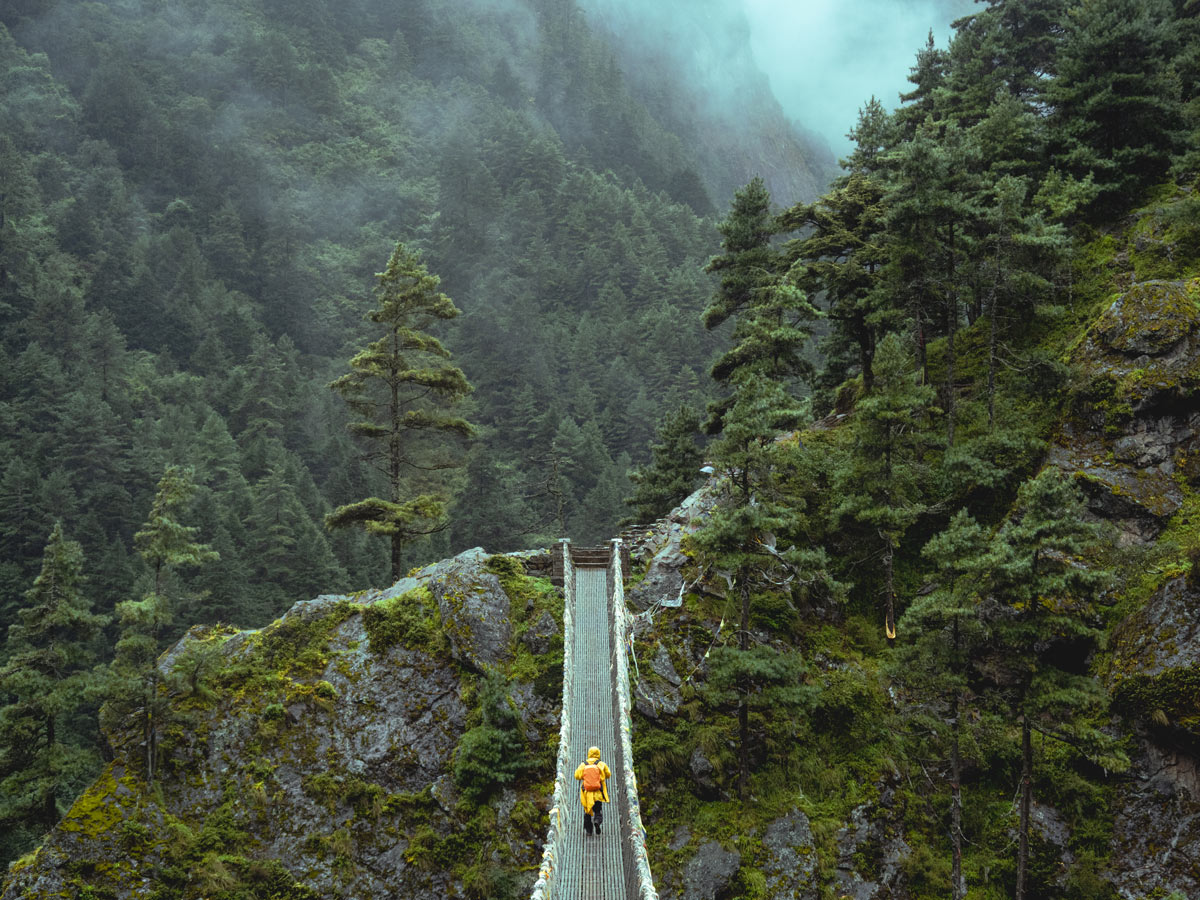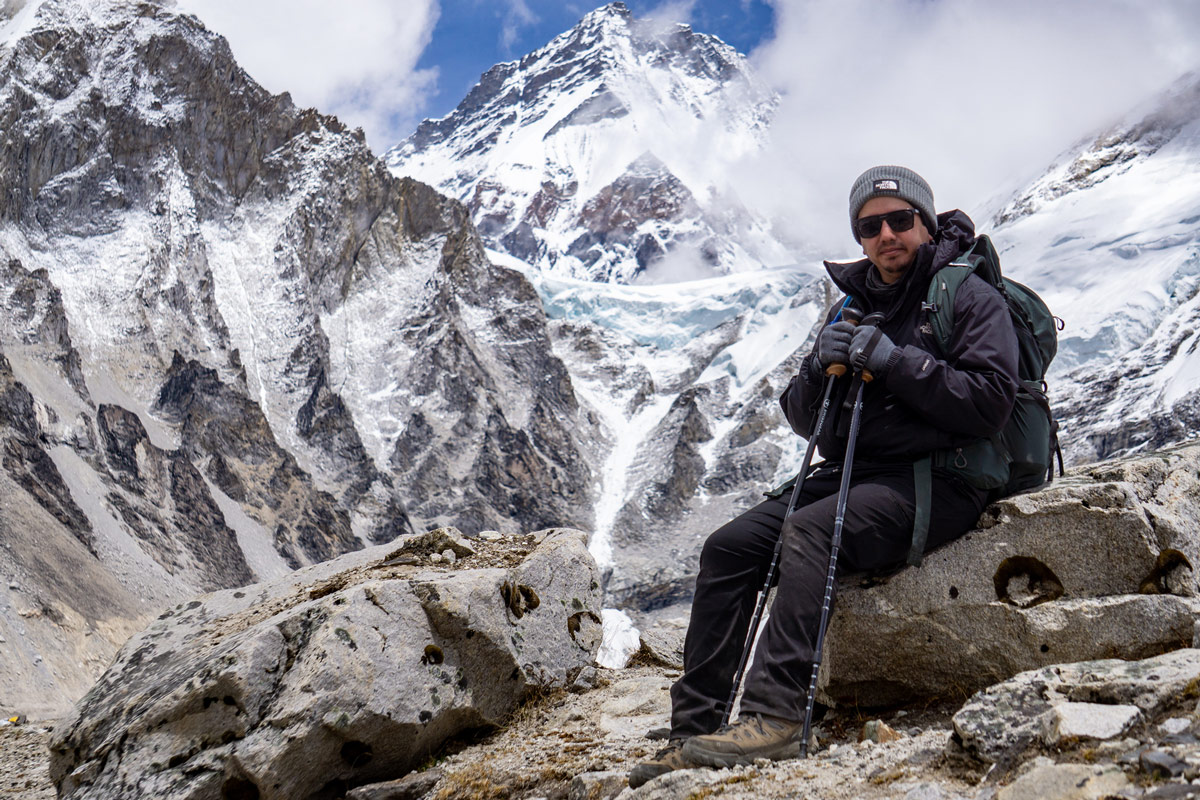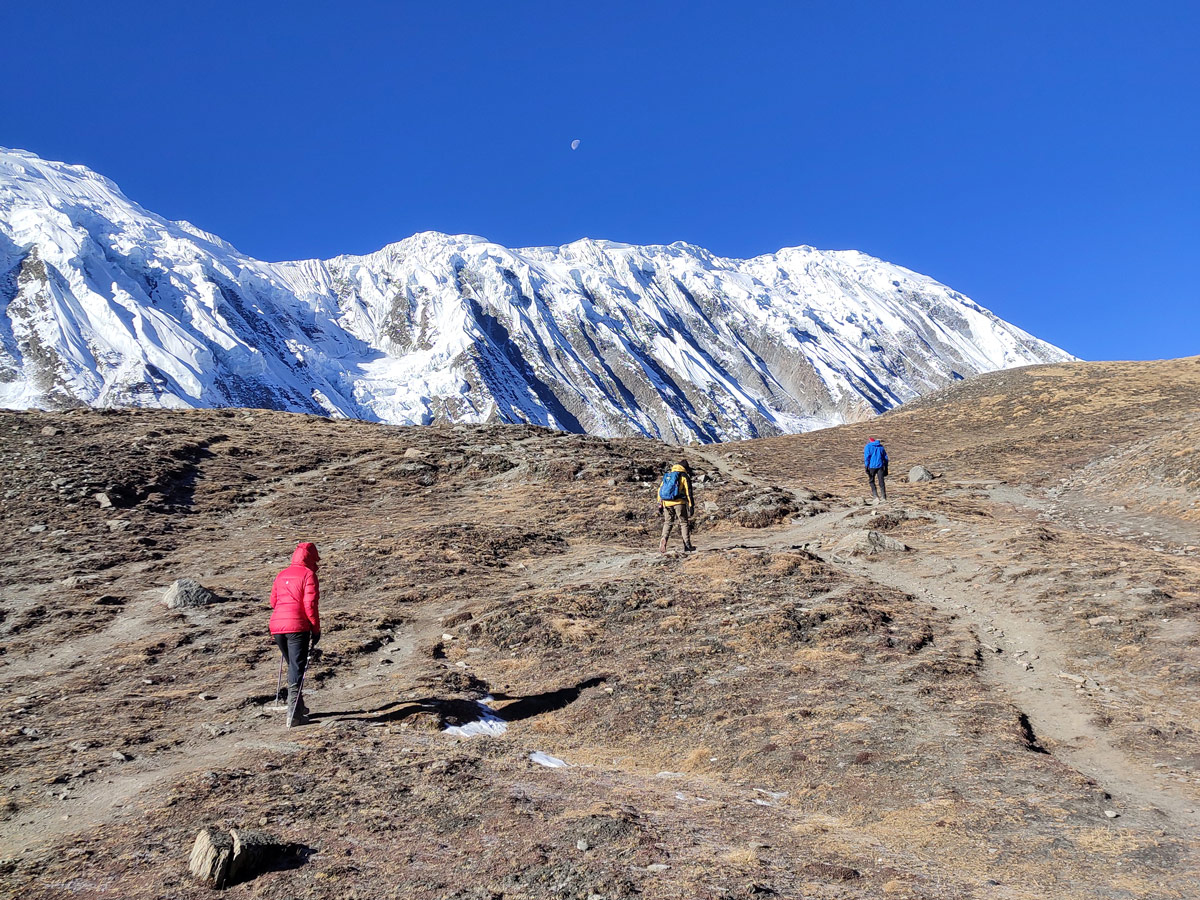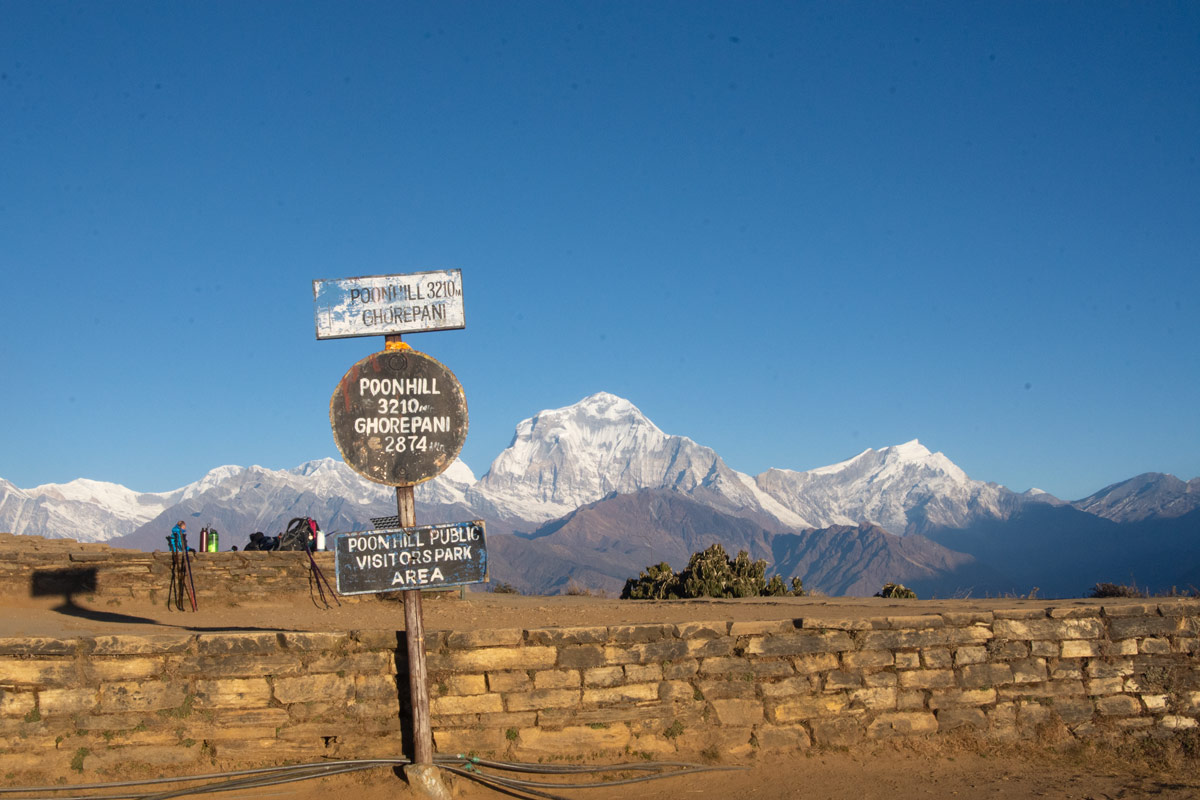Nepal is home to some of the best treks in the world and features numerous trekking options suitable for every kind of trekker.
However, it is a common belief that these treks are best suited only for peak seasons like autumn (September to November) and spring (March to May), or a shoulder season like winter (December to February).
While monsoon (June to August) might not be the best time to visit Nepal, some treks in Nepal come to life with a unique charm, lush landscapes, quieter trails, and a vibrant palette of flora and fauna that you might not be able to see during any other season.
So, let’s debunk the myths and explore the options for monsoon treks in Nepal while preparing you for this unique adventure.
Why consider a monsoon trek in Nepal?
While it is true that monsoon is considered an off-season for trekking in Nepal, it is a misconception that no trek in Nepal can be accomplished during monsoon. In fact, you can have a unique and equally adventurous trekking experience during monsoon.
Contrary to the peak trekking seasons, monsoons don’t necessarily feature azure skies and clear views. However, the magic of the months of June to August caters to a specific type of audience seeking a distinctively lush and quieter experience amidst the trails.
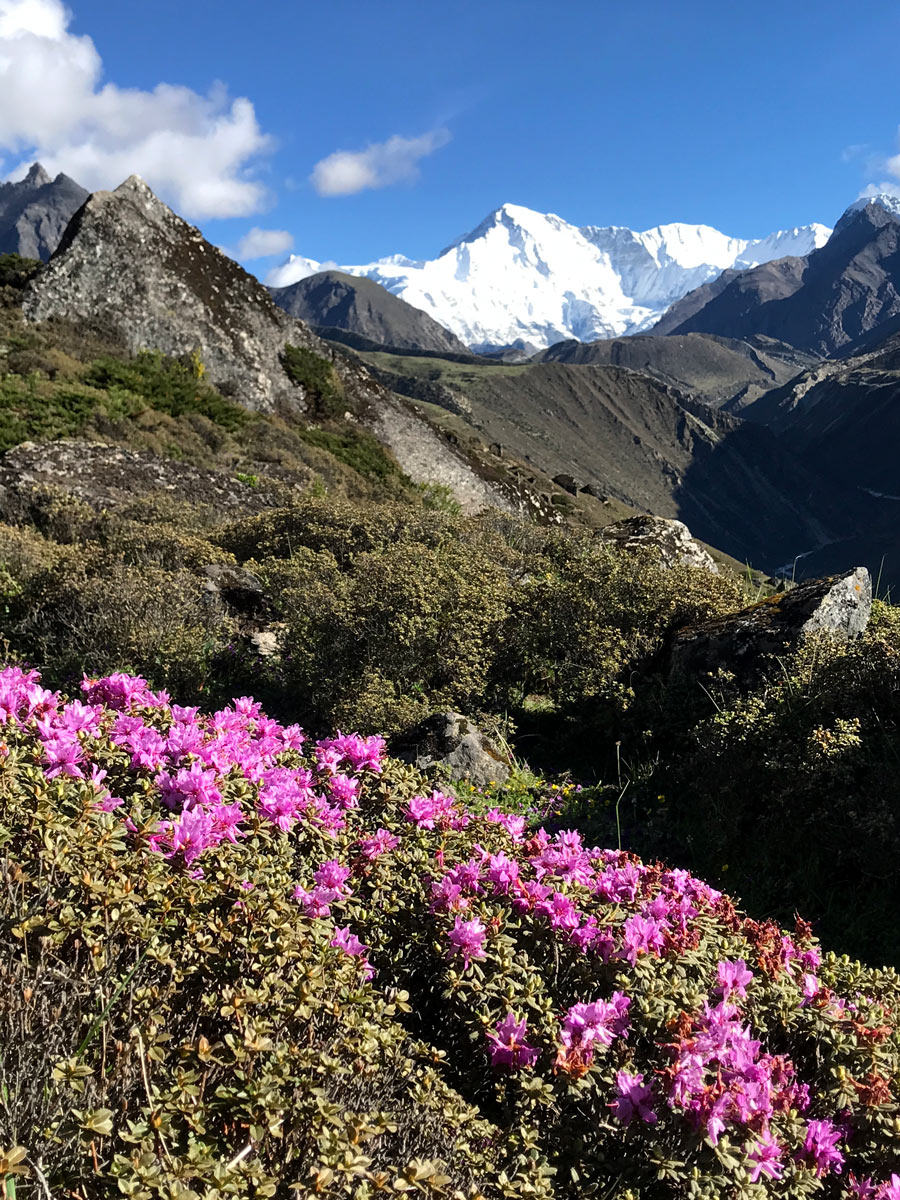
With the frequent rains, monsoons bring an atmosphere of rejuvenation to the vibrant landscapes and bring the flora to life. The meadows are bursting with wildflowers and valleys painted in different hues of greens.
On top of that, you are constantly accompanied by the soothing sounds of waterfalls and rivers and you can also witness the Himalayas surrounded by emerald mist when it is not raining.
Monsoon season also coincides with several local festivals and celebrations like Janai Purnima and Teej, and agricultural traditions like Ropain Jatra as this season is a vital time for agriculture in Nepal.
The biggest advantage of trekking in Nepal during monsoon season is that you will find no trekkers traffic which means you will have almost every trail just to yourself as you experience the raw beauty of Nepal in its most verdant.
Top Monsoon Treks in Nepal
Upper Mustang Trek
The Upper Mustang region of Nepal is located in the rain shadow of the Himalayas and thus is completely sheltered from the rain and unaffected by monsoon. It is also known as the desert of Nepal for the same reason that it experiences little to no rainfall.
Therefore, the Upper Mustang trek is the best monsoon trekking destination. The landscapes of the Upper Mustang region are also unique, dry, arid, and barren accompanied by dramatic canyons which make the region stand out from other trekking trails of Nepal.
The Upper Mustang trek is a journey spanning almost 12 to 14 days and it takes you through some of the most captivating landscapes starting from Kagbeni and reaching all the way up to Lo Manthang.
On the way, you will cross several villages like Samar, Ghami, and Charang where the landscapes often resemble Tibetan highlands.
These villages are rooted in ancient Tibetan culture and you will find ancient monasteries, caves, traditional mud houses, chortens, and lots of prayer flags.
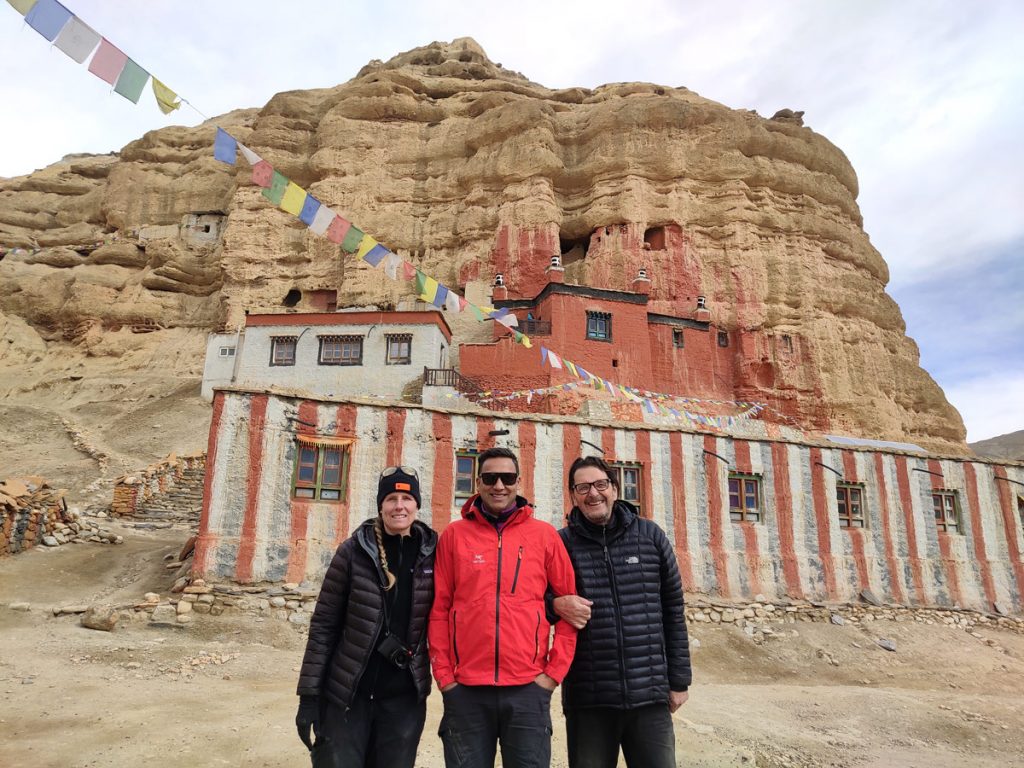
Lo Manthang is also known as the ‘Lost Kingdom’ which is surrounded by walls and it is a historically and culturally significant stop during the trek. It features ancient remains of the King’s palace and several caves.
Surrounded by walls, the kingdom is also known as the ‘walled city’ and adds more cultural impact to the trek. Lo Manthang is also the highest point of the Upper Mustang trek as it takes you to an altitude of 3,810 meters.
Other significant monasteries like Ghar Gumba and Luri Gumba are also significant stops on the trek. The famous Tiji festival celebrated in the region also coincides with monsoon where you can see the entire region coming to life with colors.
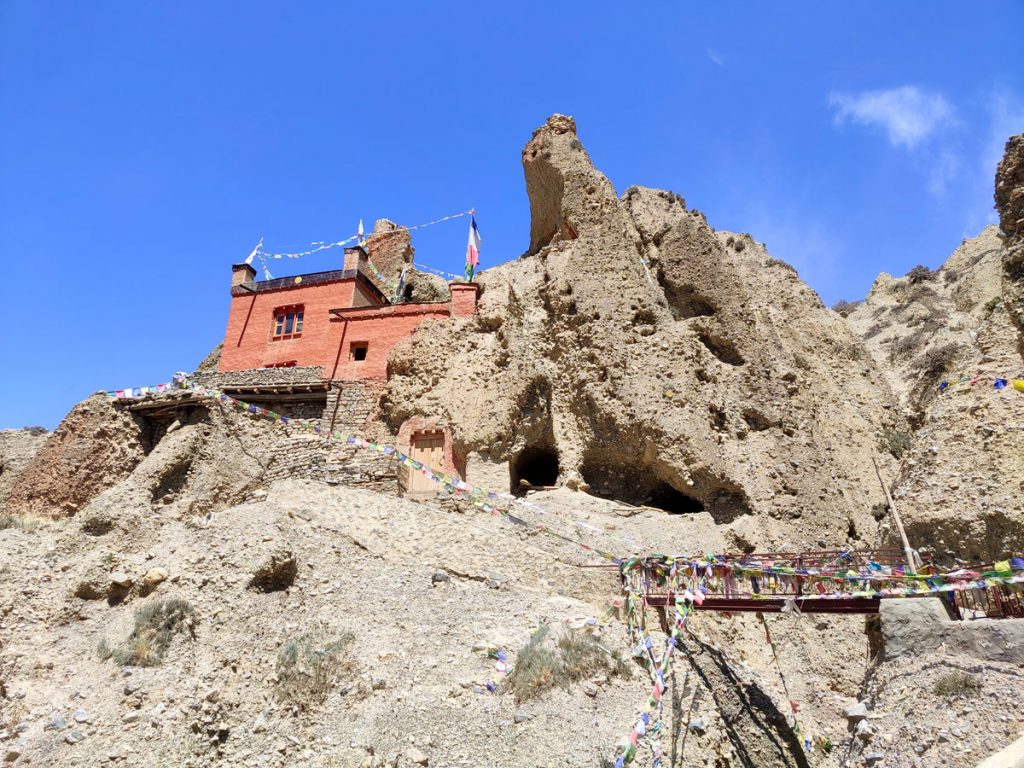
You will face absolutely no monsoon-related challenges on the Upper Mustang trek and you can get fascinating views of Annapurna, Thorung Peak, Nilgiri, Dhaulagiri, Tukuche Peak, Lamjung Himal, and more.
Upper Dolpo Trek
Another adventurous option for a Himalayan experience in Nepal while remaining unaffected by the heavy rainfall of monsoon is the remote yet stunning Upper Dolpo Trek which is a haven for those seeking natural beauty, cultural experience, and remoteness all within a single trek.
Spanning around 170 to 200 km, this trek takes around 18 to 22 days and can easily be done during monsoon as this too lies in the rain shadow of the Himalayas and experiences minimal rainfall.
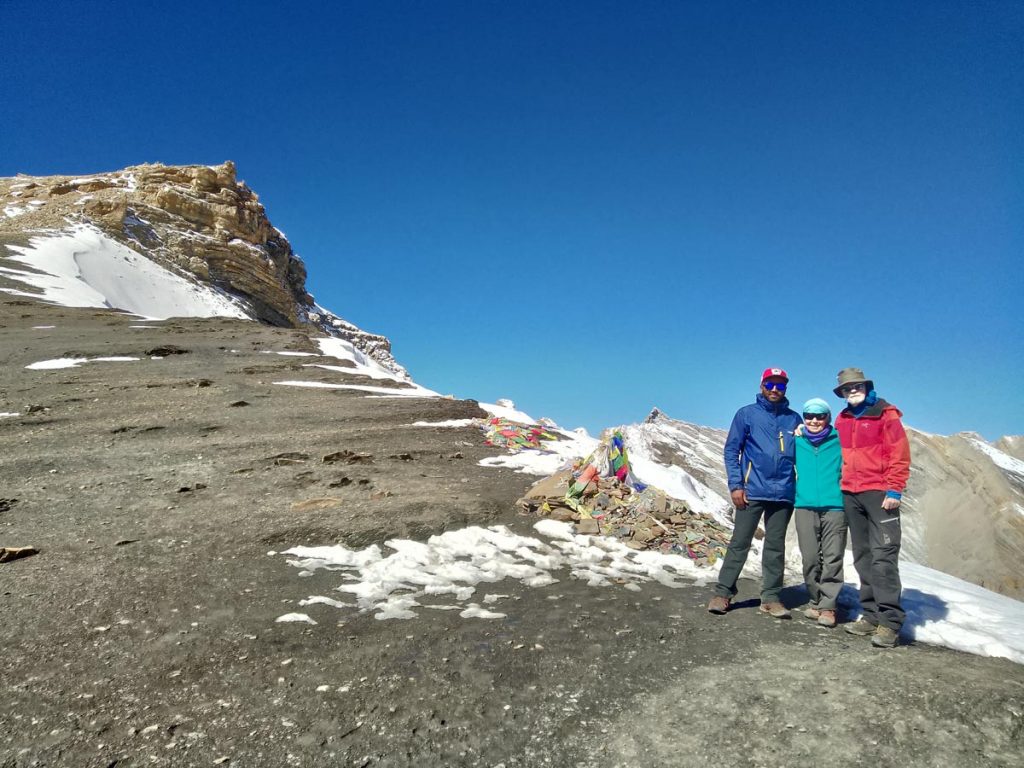
This trek begins with a scenic flight to Juphal and takes you to some of the unexplored corners of Nepal while passing through terraced fields, high mountain passes, and other remote villages, which is why it is also one of the off-the-beaten-path treks of Nepal.
Bordering Tibet, this trek passes through Renje and Phoksundo Bhanjyang, where you get to witness the stunning turquoise waters of Shey Phoksundo Lake, to reach the Kang La Pass at 5,151 meters which is the highest point of the trek.
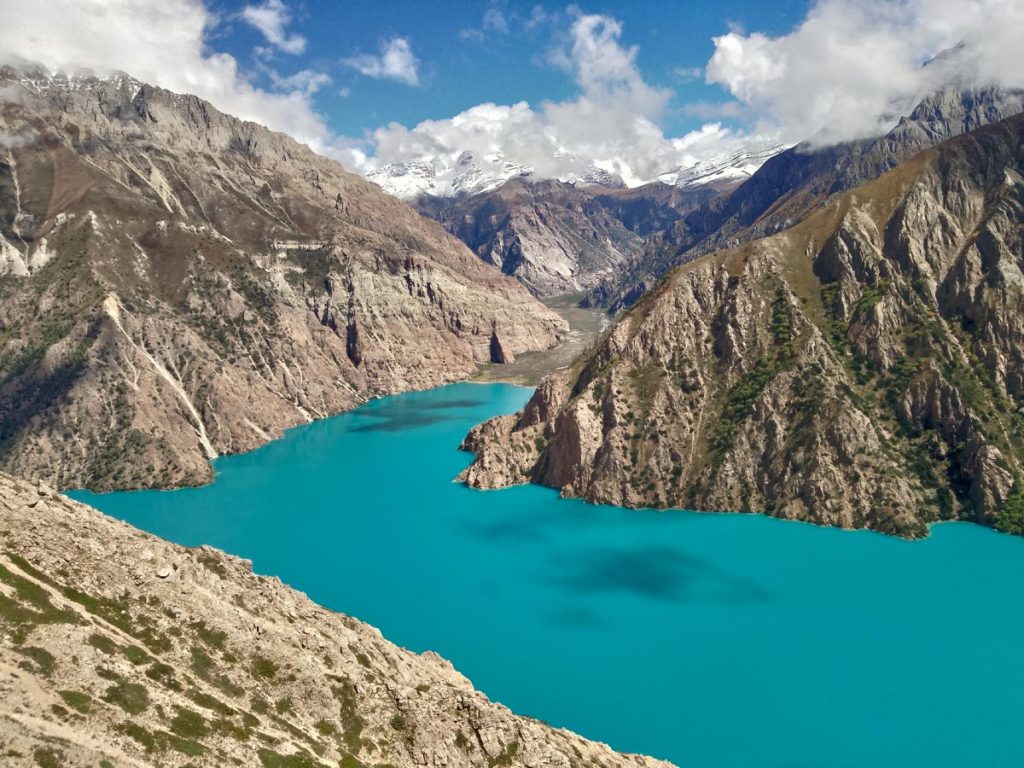
After that, your trek continues with the dramatic shift of elevation across Shey Gompa, Namduna Gaon, Saldang, Sibu, Jeng La, Tokyu, Serkam, and Tarakot forming a loop around the region.
Throughout the trek, you will get amazing views of the likes of Crystal Peak, and valleys carved by Bheri and Nang Chu Rivers, and also experience the thrill of crossing mountain passes.
One unique thing you will experience during the trek is the ancient pre-Buddhist Bon Po religion which is practiced in very few places. The cultural aspect of the trek truly comes out at locations like Shey Gompa and Bonpo Monastery.
The only problem that you might experience while trekking Upper Dolpo during monsoon season is the delay in flight to and from Juphal. Besides this, the trek is completely unaffected by monsoon.
Nar Phu Valley Trek
Continuing the series of trekking routes in the rain shadow areas, the Nar Phu Valley trek is another worthy addition to this list as it gives one of the best trekking experiences during monsoon.
It is also a rare and remote trek that takes you to the secluded Nar and Phu villages nestled in the Annapurna region of Nepal within a span of 10 to 14 days as you travel through a small segment of the elaborate Annapurna Circuit trek.
This trek comes to life during monsoons as the valleys of Nar and Phu bloom with a vibrant display of flora and the otherwise dry trails of the trek become slightly lush in certain segments.
The Nar Phu Valley trek takes you to places that have remained unchanged over the centuries which is evident in their traditional houses, deep-rooted cultures, and the Tibetan lifestyle of people, specifically Gurungs and Bhotias.
While traversing through this desert-like landscape, the likes of Tashi Lha Khang monastery add a spiritual dimension to the trek making it even more peaceful and life-changing.
During the trek, you will also cross high mountain passes of the Annapurna region like the Kang La Pass (5,306 m), and the Thorong La Pass too (5,416 m) if your itinerary permits.
While this trek always experiences relatively fewer trekkers’ traffic, during the months of monsoon (June to August) you will guaranteed have this trail all to yourself.
Ghorepani Poonhill Trek
One of the beginner-friendly treks in Nepal, the Ghorepani Poon Hill trek is a short yet rewarding option on this list which is known for its accessibility as you can experience the magic of Annapurna region without committing to the length.
Starting from Birethanti, this trek spans 4 to 5 days and covers a small segment of the Annapurna region while reaching the maximum altitude of 3,210 m at Poonhill, hence not requiring acclimatization.
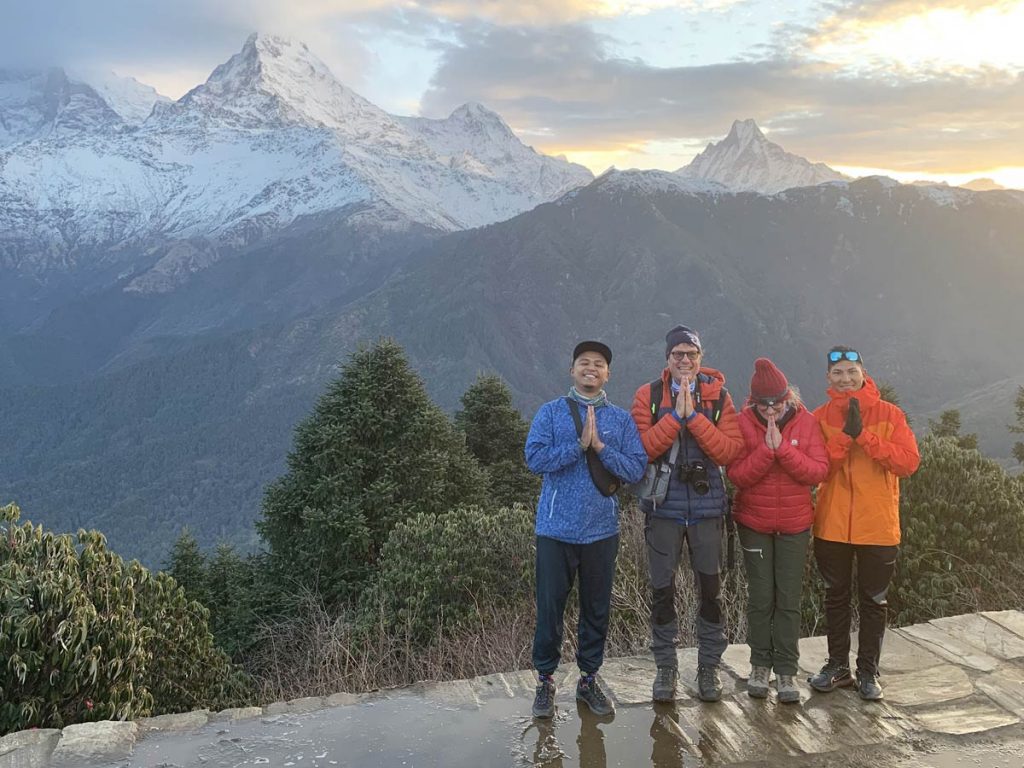
The main highlights of the Ghorepani Poonhill trek are the mesmerizing sunrise from Poonhill and the verdant rhododendron forests that accompany you during the walk to Poonhill.
If you are doing this trek during monsoon, typical chances of heavy rainfall are during the afternoon and evenings which leaves the mornings clear for perfect views if you are lucky.
You can walk up to Poonhill which is one of the best sunrise viewing spots in Nepal and get your picture-perfect view of the first rays of sun immersing the Annapurna and Dhaulagiri range in its golden hues.
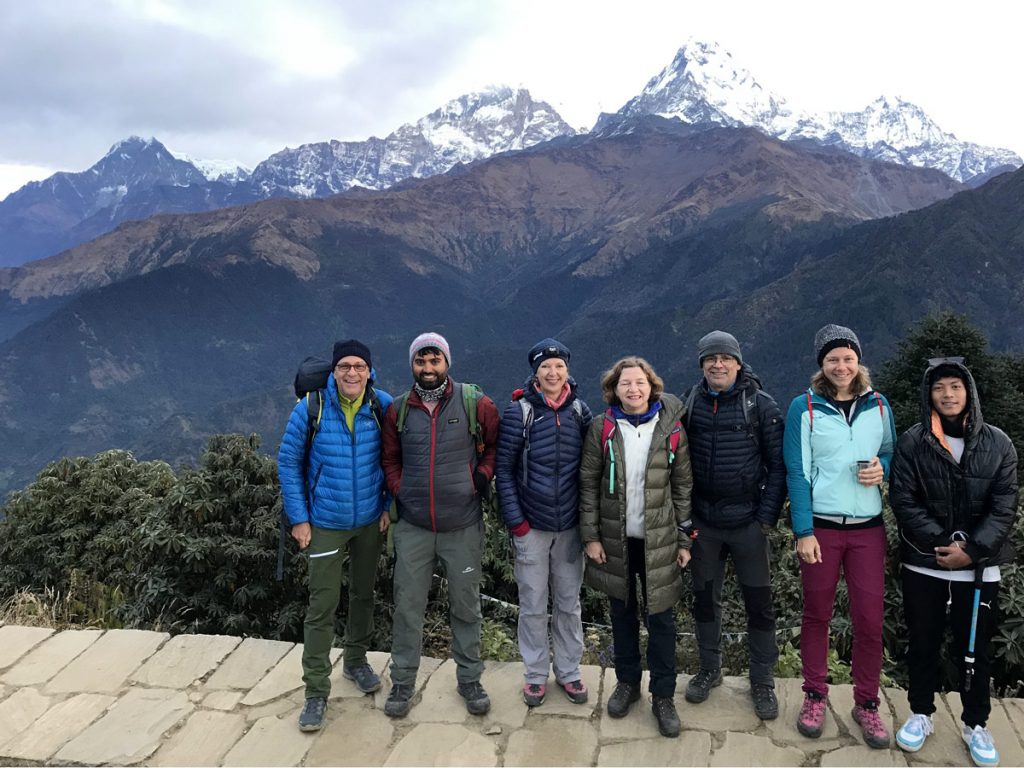
Even if the visibility is low due to clouds, you will still get a world-class view making you feel as if you are on top of the skies.
On top of that, you will also escape the crowd as this trek usually experiences a high influx of trekkers during peak seasons.
You will also get to experience the warm hospitality and rich culture of the Gurungs, Magars, and Thakalis residing in this region.
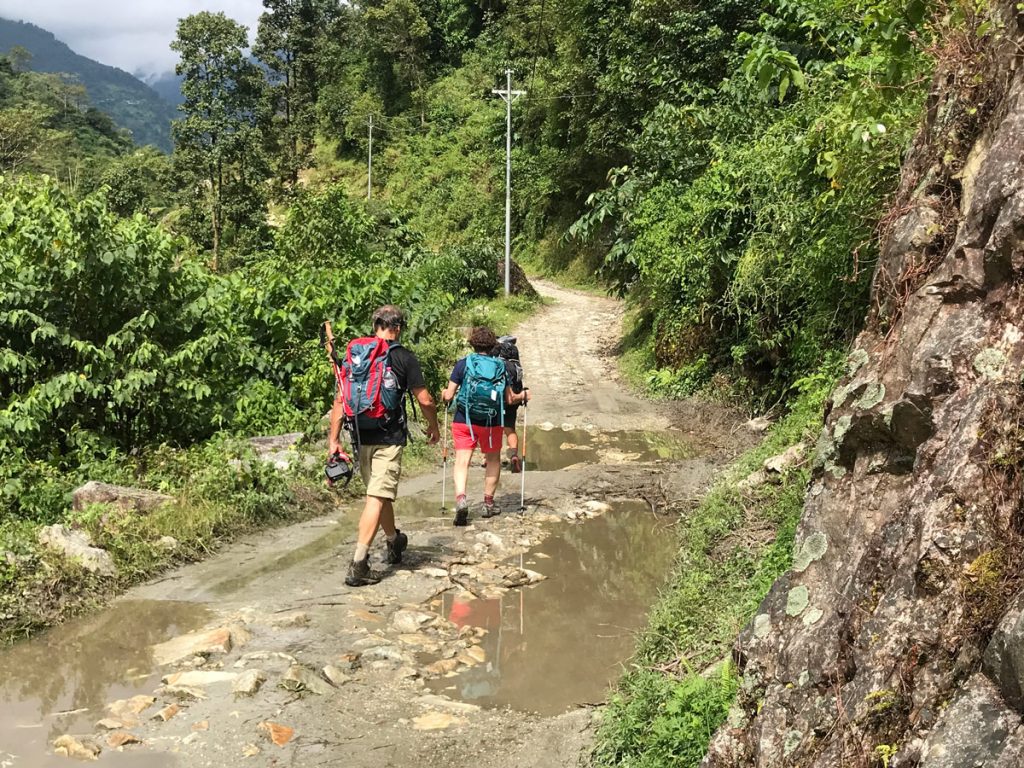
Another advantage of doing this trek during monsoon is that you can experience the lush landscapes in their full might as the wildlife activity is high the trails are dotted with wildflowers and the segment from Ghorepani to Poonhill is booming with several flora.
However, doing this trek in monsoon is slightly more difficult than doing it in other seasons as the trail becomes slippery and gets infested by leeches and the mountain views might also be obstructed.
But it is not very risky and can be conquered with proper preparation and accurate gear as the trek is short and takes you at a relatively lower altitude.
Annapurna Circuit Trek
The Annapurna Circuit trek, a legendary Himalayan adventure, is one of the few treks that experiences a mix of rain shadow and monsoon zones which makes it a partially protected area during monsoon.
This trek is usually avoided during monsoon as it experiences a reasonable amount of rainfall. However, with certain precautions and knowledge, this trek can be completed during monsoon too.
Starting from Syange, the trek circumnavigates around the Annapurna massif and covers a major portion of the Annapurna Conservation Area. The highest point on this trek is at the Thorong La Pass at 5,416 m.
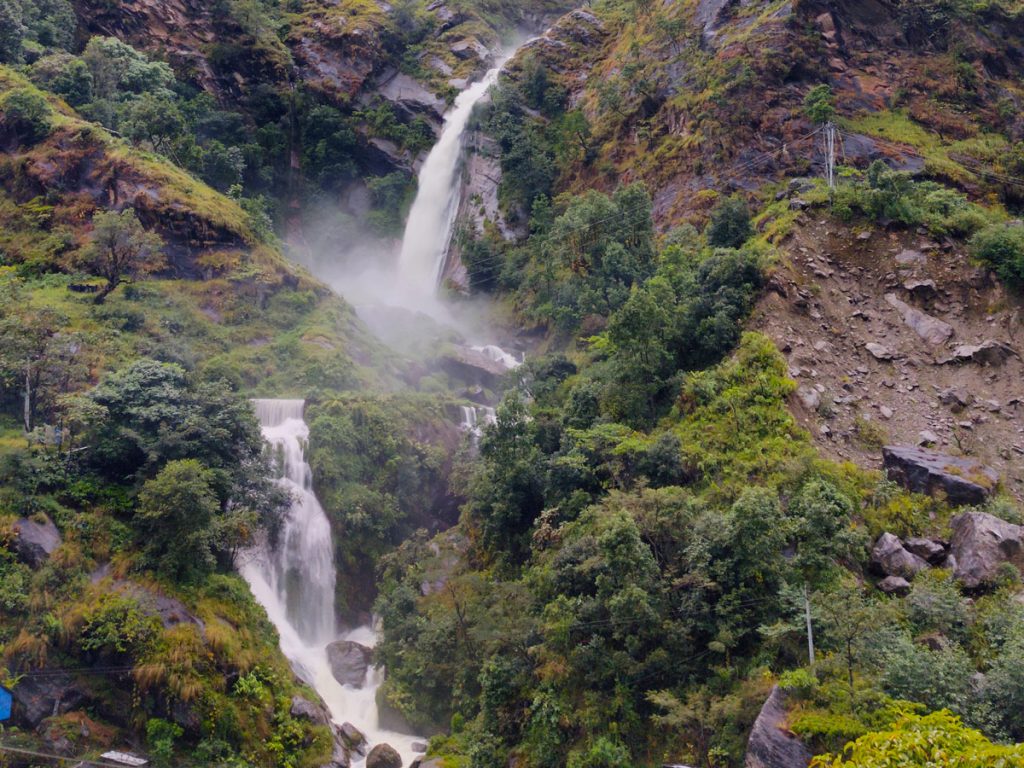
This is a lengthy trek and covers around 170 to 210 km. Therefore, it can be divided into sections. The northern section of the Annapurna Circuit trek is located in the rain shadow area and experiences minimal rainfall.
This section includes places close to Manang and Mustang and they become a viable option during monsoon. Here you will see deep canyons and valleys like the Kali Gandaki Gorge and dry and arid landscapes.
Even if you are trekking the entire circuit, only the lower sections of the trek will be more challenging as the amount of rainfall decreases as you ascend higher.
During the lower sections, you have to be careful about slippery trails and other challenges like leeches and carry rain-protecting gear.
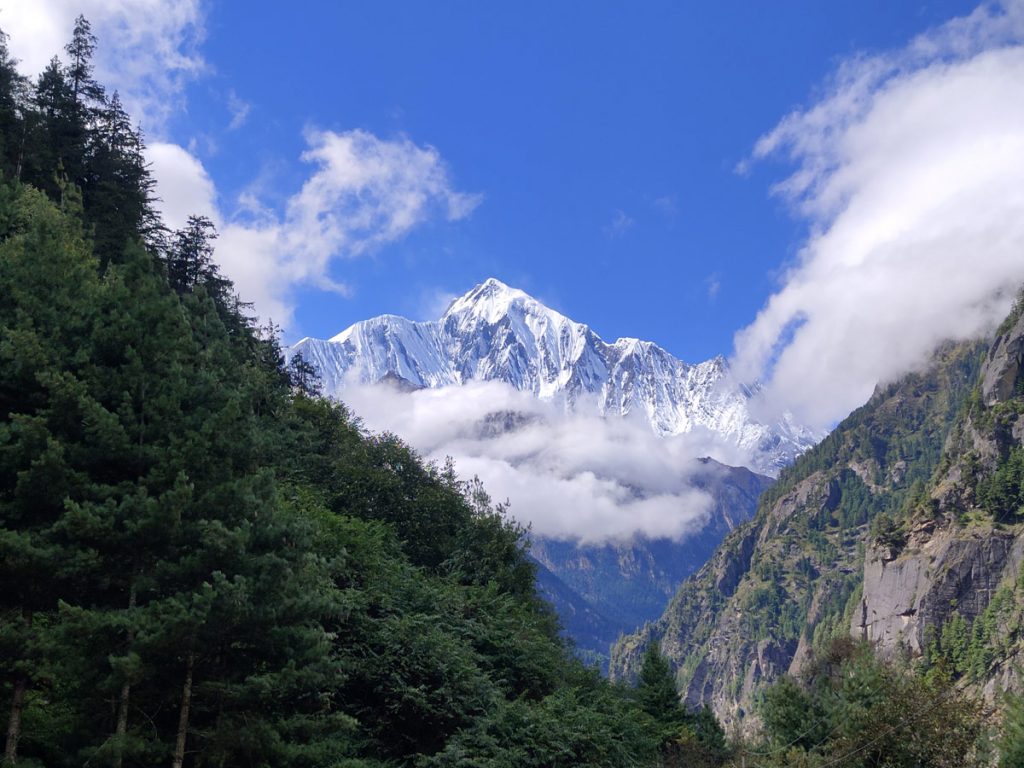
Other risks like landslides and trail blockage are not much of a problem during the Annapurna Circuit trek as it features a dirt road that runs parallel to the trekking trail. So, in case of trail blockage, you can always take the dirt road.
What you can focus on is the lush and vibrant landscapes with high agricultural activities that will make your experience a memorable and tranquil one due to less crowds.
Everest Base Camp Trek
A final addition to this list is the iconic Everest Base Camp trek which, to your surprise, can also be rather easily completed during monsoon. It is challenging, yes, but it is also much more adventurous and uniquely memorable.
Starting with a scenic flight to Lukla Airport, the Everest Base Camp trek is a 10 to 12-day adventure that takes you to the foothill of the highest peak in the world – Mount Everest. It is a highly popular trek and is worth all the hype.
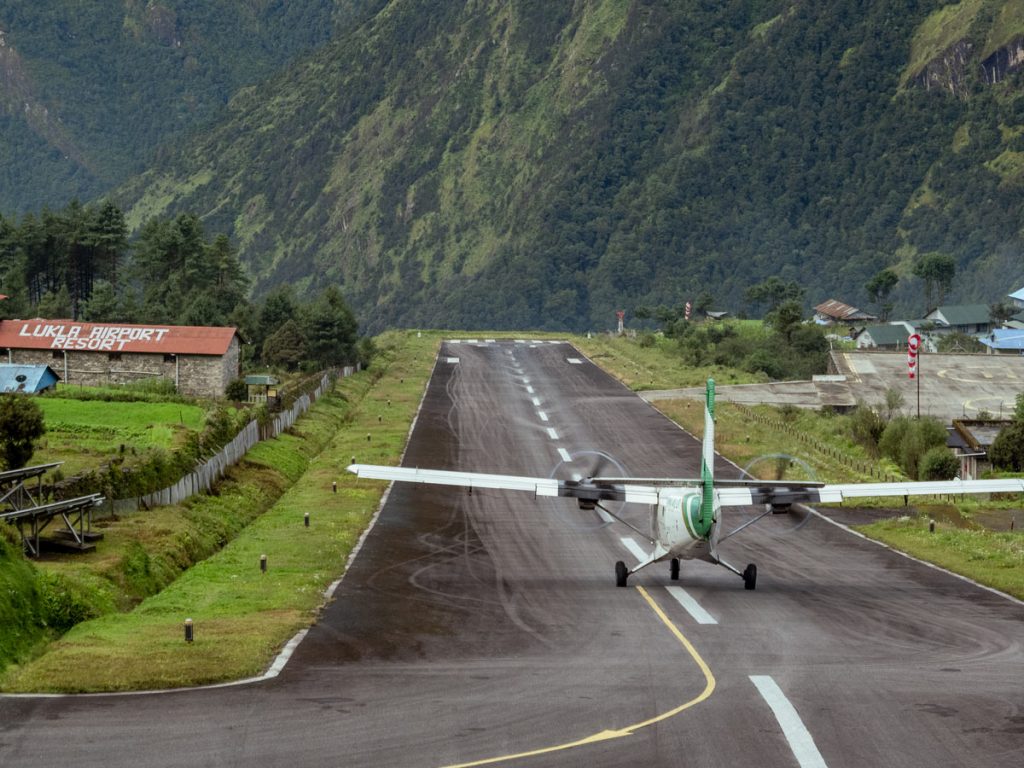
Doing Everest Base Camp Trek during monsoon is an experience much different than doing it during autumn or spring. While the rainfall can be a disturbance for a few days in the beginning, it begins to subside as you ascend higher.
You must be prepared and careful though as the trail becomes slippery during monsoon and the chances of injuries are increased. The visibility of the mountains is also low and expect rain at any sudden time.
But if you have the proper gear to tackle it, the rewards of this trek during monsoon overpower the challenges. The landscapes as you pass the Sherpa villages are bursting with rhododendrons and juniper.
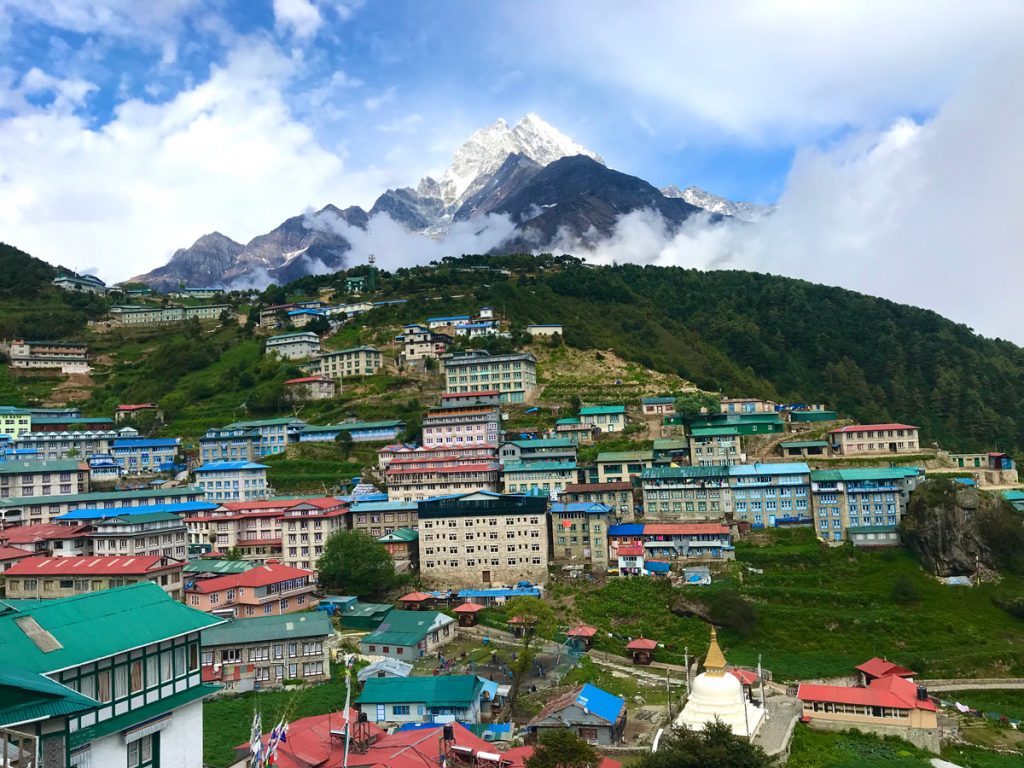
You will come across several waterfalls as you make your way through Namche Bazaar, Tengboche, and Dingboche, and continue the trek.
As you reach higher, the rainfall might manifest as snow adding more ethereal beauty to the already stunning trail. The rainfall becomes relatively less once you cross Namche.
The skies are also relatively clear during mornings, which can allow you to catch a quick glimpse of the mountains. And you can experience all this while not being suffocated by the huge crowd that the trail experiences during other seasons.
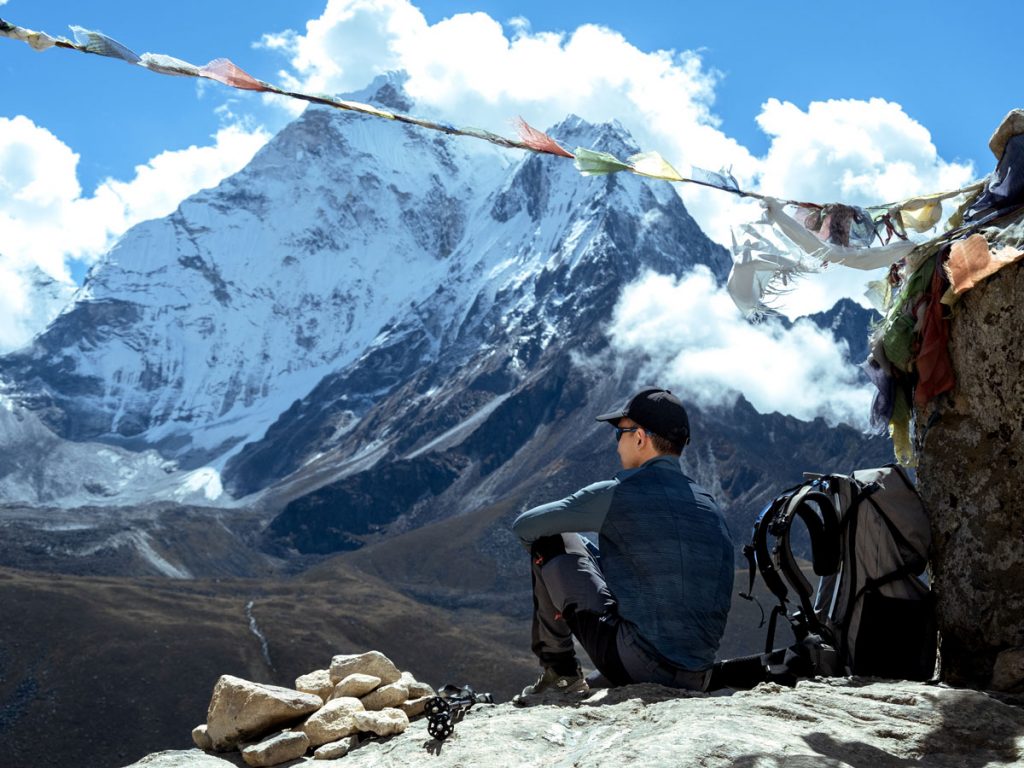
However, one thing that might be a hurdle in your trekking plans is the frequent delays and cancellations of flights to and from Lukla as it is considered a dangerous airport, and flying during monsoon can be challenging.
Therefore, it is advisable to include buffer days in your itinerary as there are chances of delays in your itinerary due to these weather-related delays at the Lukla airport.
Challenges During Monsoon Treks
Despite all these unique experiences and vibrant atmosphere, the reason why monsoon is considered an off-season for trekking in Nepal is because of the lots of challenges it brings along.
The main challenge of trekking during monsoon is that the trails, which are already rugged and often not well maintained, become extremely muddy and slippery due to constant rainfall.
Combined with this, the visibility is also not high due to rain and fog. This increases the risk of slipping, falls, and injury making the trails accident prone, especially for beginners due to tired leg muscles, improper footing, and lack of balance on slippery trails.
Due to lack of visibility, one might also miss out on one of the highlights of trekking in Nepal which is the picture-perfect mountain views which can be disappointing. However, you do get a unique and mystical view due to the clouds.
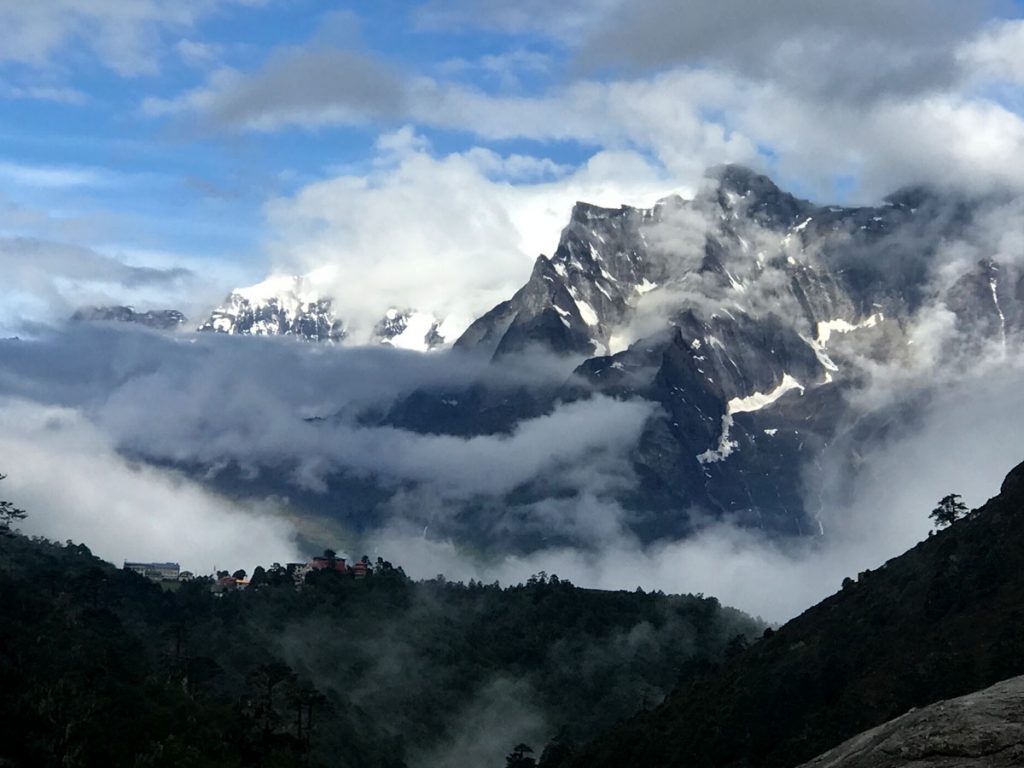
Another disadvantage is that most of the trails in Nepal are infested with leeches and these bloodsuckers can latch onto your skin without even being detected. Heavy rainfall can also lead to trail blockage and landslides at times.
You will also come across unpredictable weather challenges like sudden rain, thunderstorms, or even hailstorms. Also, because monsoon is an off-season, the number of teahouses and lodges on the trek is very limited as most of them will be closed.
Essential Tips for Monsoon Trekking
Although many challenges are prevalent during trekking in monsoon, they can be tackled with proper preparation, thorough packing, early measures, and a spirit of adventure.
- Set realistic expectations to avoid disappointment during the trek as it is highly likely that you will not be getting mountain views on a monsoon trek in Nepal.
- You need to have flexibility in travel plans as occasional delays are possible due to unpredictable weather conditions which might in turn affect your overall itinerary.
- As monsoon is an off-season for trekking in Nepal, you might not get all the facilities like an elaborate food menu, wi-fi and internet services, and even laundry sometimes. So, be prepared.
- To tackle the slippery trails, wear sturdy and waterproof hiking boots preferably with spikes for better traction.
- Carry a trekking pole too for better grip, stability, and balance in the slippery sections. Be mindful of your footing.
- Make sure to wear a gaiter over the boots and apply salt on it for leech protection.
- Carry a good insect repellant containing DEET and spray it on your shoes, socks, and lower legs constantly throughout the day.
- Check your shoes, socks, and legs for any leeches, and do not panic if you find one. Use salt to detach it and flick it with your fingernail. Do not pull it forcefully to avoid infection. Clean it with antiseptic and bandage.
- Pack quick-drying clothes that are suitable for layering when trekking in monsoon.
- Carry proper and high-quality rain gear like rain jackets, rain pants, and bag covers which are breathable along with being waterproof.
- Be aware of your surroundings while trekking and watch out for warnings of potential landslides, loose scree, cracks in the ground, or unusual flow of water.
- Partner with a local reputed agency and hire guides for safe and successful trekking adventures as guides know these trails much better and can predict the weather patterns.
